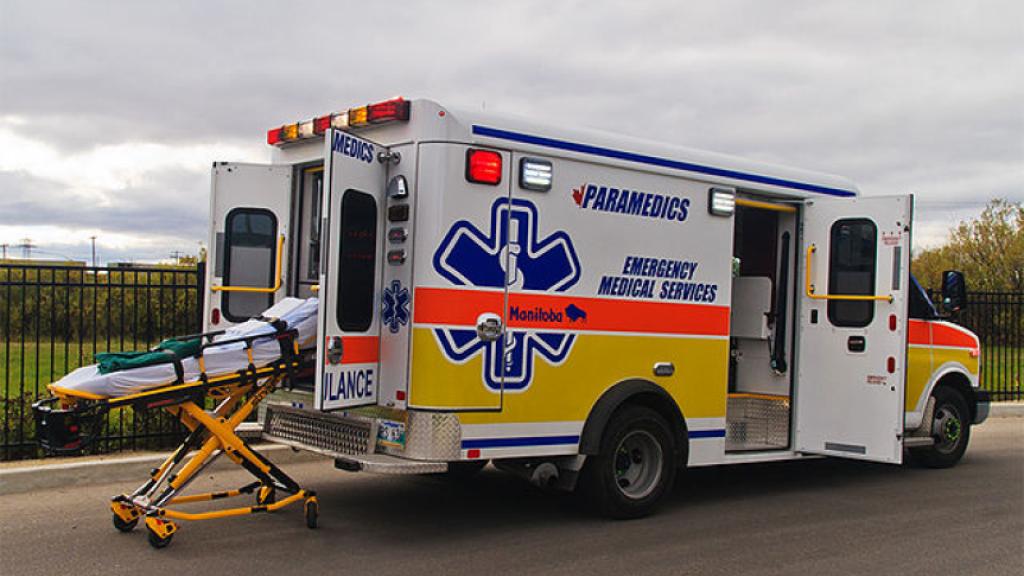
Integration of fire and ambulance in Winnipeg - New live training facility in Amherst. Nova Scotia
Thank you for choosing Automatic Translation. Currently we are offering translations from English into French and German, with more translation languages to be added in the near future. Please be aware that these translations are generated by a third party AI software service. While we have found that the translations are mostly correct, they may not be perfect in every case. To ensure the information you read is correct, please refer to the original article in English. If you find an error in a translation which you would like to bring to our attention, it would help us greatly if you let us know. We can correct any text or section, once we are aware of it. Please do not hesitate to contact our webmaster to let us know of any translation errors.
Two Canadian cities have decided to make bold investment in training and a new EMS model. Amherst has officially greenlit a $2 million live fire training facility and Winnipeg Fire Paramedic Service (WFPS) is proving that integration of fire and ambulance isn’t just efficient—it saves lives.
Town of Amherst Invests in the Future of Firefighting with $2 Million Live Fire Training Facility
In a bold move to elevate firefighter readiness and safety, the Town of Amherst has officially greenlit a $2 million live fire training facility, marking a major milestone for emergency services in Nova Scotia. The project, a collaboration between the Town Council and the Amherst Firefighters Association, is set to provide cutting-edge, realistic fire suppression training for local crews.
The funding breakdown reflects strong community support: $175,000 will come from the town’s capital reserve, while the remaining $1,825,000 is being provided through a grant from the Amherst Firefighters Association. The council approved the initiative earlier this year, but with the agreement now signed, development is ready to begin.
“This facility will ensure our firefighters are equipped with the hands-on experience they need to respond effectively and safely to real-world emergencies,” said Greg Jones, Amherst’s Director of Fire Services, during the announcement. He was joined by Mayor Rob Small and Firefighters Association leaders Michel Poirier and Raymond MacDonald.
Live fire training facilities simulate actual fire conditions, allowing firefighters to practice ventilation, search and rescue, hose handling, and fire behaviour recognition in a controlled environment. These scenarios are critical for preparing crews to handle residential, industrial, and wildland fires with precision and confidence.
The investment comes at a time when fire departments across Canada are facing increasing demands—from climate-driven wildfires to evolving urban hazards. Amherst’s initiative sets a precedent for smaller municipalities looking to modernize their emergency response infrastructure.
You can read the full announcement on Canadian Firefighter Magazine
Unified Fire & EMS Model Boosts Emergency Response in Winnipeg
By Björn | September 9, 2025
WINNIPEG, MB — The Winnipeg Fire Paramedic Service (WFPS) is proving that integration isn’t just efficient—it saves lives. Since merging fire and emergency medical services under one banner in 2000, WFPS has evolved into one of Canada’s most advanced joint-response models, blending paramedic precision with fire rescue speed.
In a recent interview with Canadian Firefighter Magazine, Deputy Chief Scott Wilkinson explained how the unified structure allows crews to respond faster and more effectively to critical emergencies. Every fire engine and rescue vehicle in Winnipeg now carries at least one licensed firefighter-paramedic, ensuring that life-saving care begins even before an ambulance arrives.
Smarter Dispatch, Faster Care
Earlier this year, WFPS revamped its dispatch system, expanding from two priority levels to five for medical calls. This change allows for more nuanced triage, reducing unnecessary lights-and-sirens responses and focusing resources on high-acuity cases. The system uses over 4,500 determinant codes to guide dispatch decisions, based on caller input and emergency type.
Training & Specialization
WFPS members undergo rigorous training, including Level 1 and 2 firefighting certifications and paramedic licensing through the College of Paramedics of Manitoba. Specialized roles include:
- Advanced Care Paramedics for cardiac and respiratory emergencies
- Tactical EMS Paramedics embedded with police units
- Community Paramedics for outreach and preventative care
- Firefighter-Paramedics who respond to both medical and fire calls
Impact by the Numbers
In 2023 alone, WFPS responded to over 109,000 EMS incidents and more than 20,000 fire rescue calls. Nearly half of all medical emergencies involved both ambulance and fire crews, demonstrating the value of dual-response capability.
Why It Matters
“The unified model shortens the time between a life-threatening event and medical intervention,” Wilkinson said. “Often, a fire apparatus arrives before an ambulance, allowing critical treatment to begin immediately.” The system also reduces administrative duplication and improves coverage across the city.
Winnipeg’s approach is being watched closely by other municipalities seeking to modernize emergency services. As call volumes rise and emergencies grow more complex, WFPS’s integrated model may become the blueprint for future urban response systems.
You can read the full interview on Canadian Firefighter Magazine.
Photo Credit: Wikipedia Commons License
WEMS ambulance with cot
-
3/4 rear view of typical Manitoba ambulance w/ Stryker Power-PRO™ XT cot
Date
9 October 2014
Source
Photoshoot
Author
